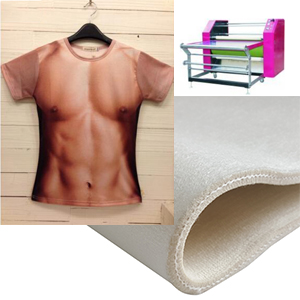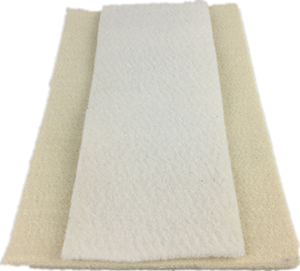In fashion handicrafts are increasingly loved by people today, a variety of transfer printing technology for the production of handicrafts has also been developed, and attracted a lot of entrepreneurs and fashion beauty families to use. Among them, the most known transfer technology is water transfer and heat transfer two, what is heat transfer technology? What are its features and uses? How about its transfer operation and market demand? Let’s move on.

A brief introduction to Heat transfer printing technology
Transfer printing refers to a printing method in which the text and text on the intermediate carrier film are transferred to the substrate with the corresponding pressure. According to the different pressure, transfer printing can be divided into water transfer, heat transfer, gas transfer, screen transfer, low-temperature transfer and so on.
Among them, Heat transfer printing is to use Heat transfer ink (Heat sublimation ink) to print any image such as portrait, landscape, etc. on color inkjet paper (or Heat sublimation special inkjet printing paper), or ordinary ink to print on the film Heat transfer paper, and then heat to a certain temperature in a few minutes after heat transfer heating equipment.A special printing process in which paper patterns and colors are realistically transferred to materials such as porcelain, glass, metal, plastic, and cotton textiles.
Thus, using heat transfer technology, even for multi-color patterns, as the heat transfer process is only one process, the customer can shorten the printing of patterns and reduce the loss of materials (finished products) due to printing errors. In other words, the use of Heat transfer printing film printing can be a multi-color pattern into the map, without color, even if only with some simple equipment can also be printed out of a realistic pattern, so that it greatly improves the scope of application and the realization of the transfer printing operation.
Second, the production of tools and implementation process
The use of heat transfer printing technology can be widely applied to porcelain, glass, metal, plastic, cotton fabric, and other materials of the object, but due to the heat transfer is limited by the area, the shape of the object, so for different areas, shapes of the object often need to use a specific tool, At present, the common heat transfer production tools are mainly flat plate machine (hot stamping machine), baking tray machine, baking cup machine and so on, but after all, their production methods are based on the principle of heat transfer, so the production steps and processes are the same, but the application of heat transfer tools is different. The following is an example of using a platen machine to transfer images to clothes to explain the steps and processes of Heat transfer production.
Step 1: Print the image through a color inkjet printer.
Step 2: Put the printed pattern aside and transfer it after about 15 ~ 20 minutes. During transfer printing, the printed image should be placed on the clothes face down, and then adjust the time (usually 20 seconds) according to the transfer requirements of Heat transfer printing equipment, and close the heating plate of the equipment (Note: Cotton T-shirt before transfer printing should be sprayed in the printing part of a point of a deepening agent and must be dried and then heat transfer printing, its role is to change the ink color through Heat pressure, improve the bright effect of ink on clothing).
The third step: in order to avoid the clothes because the temperature is too high yellow, can be a piece of interlining cloth on the clothing pad and then Heat transfer.
After the time alarm of the heat transfer printing equipment, lift the heating sheet, quickly uncover the pattern paper, take out the clothes, and turn off the power. Step 4: Finally, when the temperature of the clothes cools, fold them and bag them, the whole heat transfer printing can be completed and the finished product can be produced
Heat Transfer Printing Felt & machine manufacturer supplier exporters
 Heat Transfer Printing Felt |
 Heat Press Printing Felt |
As we know, Heat Transfer Printing Felt is suitable for fabrics, decorative fabrics, curtains, le...
Read Safety Rules for Laundry Management to be a qualified manager. PARTⅠ Laundry room Safety Gen...
The aluminum extrusion machine is the leading equipment for the production of aluminum profiles. ...
Heat transfer printing is a contemporary printing process in the clothing market. It prints the p...
In the textile industry, felt is only a small part but important. About how to choose felt that i...
Foshan Pure Technology Company., Ltd. helps conveyor belt manufacturers source equipment to metal...
What is Nomex? Meta-amide, or meta-phenylene isophthalamide, is made from meta-phenylenediamine a...
Kevlar fiber Introduction In the development of materials science, Kevlar fiber has particularly ...